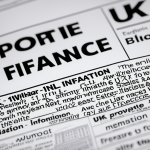Leading Influences in UK Women’s Fashion Circles
The UK fashion influences this season are largely shaped by an exciting blend of established designers and fresh voices. Leading brands showcased their visions during London Fashion Week, a pivotal event that sets the tone for upcoming trends. Designers like Burberry and Simone Rocha reveal collections that balance heritage with modernity, blending classic elements with innovative materials and silhouettes.
The impact of London Fashion Week extends beyond high-fashion runways. It trickles down to high-street retailers, making designer trends accessible and influencing everyday style choices among British women. Retail giants adapt runway aesthetics into affordable collections, aligning with the pulse of UK street style.
Additionally, emerging talents such as Mia Austin and Priya Sen are redefining UK women’s fashion with bold designs and sustainable practices. These new voices push boundaries, injecting fresh energy into a competitive market and attracting younger consumers. Their work contributes to a dynamic fashion ecosystem, where tradition meets innovation, and inclusivity is increasingly prioritized.
Together, these factors create a vibrant mosaic of influences, making the UK a continual leader in women’s fashion both domestically and globally.
Leading Influences in UK Women’s Fashion Circles
The UK fashion influences currently radiate from a blend of established designers and fresh talent reshaping women’s style. Key players like Burberry, JW Anderson, and ÉTUDES Studio dominate the scene, channeling both cutting-edge and classic aesthetics throughout the season. These designers emphasize innovation, sustainability, and British heritage, which appeal broadly within the UK’s fashion community.
London Fashion Week remains pivotal, acting as a global stage where trends are born and amplified. Its impact stretches beyond the catwalk, influencing not just luxury labels but also high-street retailers such as Zara and Topshop. These retailers rapidly adapt runway looks for everyday wear, making designer trends accessible across the country.
Emerging designers, including Grace Wales Bonner and Richard Quinn, are gaining recognition for their bold reinventions of traditional UK women’s fashion. Their work often highlights diverse cultural narratives while pushing boundaries in silhouette and textile choices, adding fresh vitality to the fashion landscape.
Through this synergy of veteran and emerging voices, coupled with London Fashion Week’s spotlight and high-street dynamism, the UK’s women’s fashion circles continue to evolve, setting trends that resonate nationally and internationally.
Key Clothing Trends for the Season
The trendy clothing styles dominating this season in the UK focus on versatility and bold expression. Essential apparel pieces include oversized blazers, wide-leg trousers, and puff-sleeve tops, which blend comfort with a fashionable edge. These staples provide a foundation that aligns with the broader seasonal fashion emphasis on combining classic shapes with modern detail.
Popular women’s outfits UK-wide often showcase a mix of textured fabrics such as velvet and organic cotton. This choice reflects growing interest in sustainability without sacrificing style. Additionally, fluid dresses with asymmetric hemlines have gained traction, introducing dynamic movement and a fresh silhouette into everyday wardrobes.
Styling runway looks for daily wear demands a balance between trendiness and practicality. For instance, layering a tailored blazer over a casual tee creates polished yet approachable outfits. Incorporating statement pieces like wide-leg trousers helps adapt designer trends effortlessly into streetwear.
Understanding these trendy clothing styles allows women across the UK to engage with the latest fashion while tailoring it to personal preference and lifestyle. This season’s focus on adaptable, eye-catching garments makes it easier to stay current and confident in various settings.
Key Clothing Trends for the Season
This season’s trendy clothing styles spotlight a fresh wave of seasonal fashion in the UK, where versatility and bold choices coexist in popular women’s outfits UK-wide. Essential pieces include oversized blazers and tailored trousers, merging comfort with sharp silhouettes. These cuts echo the structured looks debuted during London Fashion Week, offering an elevated yet wearable option for working professionals and casual settings alike.
Fabric choices emphasize sustainability, featuring organic cottons and recycled materials, reflecting the broader industry shift toward eco-conscious production. Flowing midi skirts paired with chunky boots showcase a blend of elegance and edge, symbolizing how women’s fashion embraces dynamic contrasts.
Stylist advice often centers on adapting runway trends to daily wear. Layering remains pivotal, allowing for climate adaptability and style mixing. For instance, pairing a minimalist turtleneck under a bold-printed dress creates an effortless, textured look ideal for transitional weather.
Incorporating these trendy clothing styles means balancing runway inspiration with personal style pragmatically. Practicality and aesthetics merge, ensuring that popular women’s outfits UK fashionistas pursue are both striking and functional in everyday wardrobes.
Leading Influences in UK Women’s Fashion Circles
The UK fashion influences scene this season remains robust, driven by heavyweight designers such as Burberry and JW Anderson, whose collections blend innovation with cultural heritage. Their work not only defines designer trends but also resonates strongly during London Fashion Week, a core platform where creative visions converge and new styles debut.
This event acts as a catalyst for style shifts across the country. For example, trends unveiled on runways are quickly translated by high-street retailers, making high fashion more accessible to everyday consumers. Chains like Zara and Topshop adapt these designer trends to fit mass-market demand, amplifying the influence of London’s fashion ecosystem beyond elite circles.
Emerging talents, including Grace Wales Bonner and Richard Quinn, further enrich the UK fashion landscape. Their innovative approaches challenge traditional aesthetics, weaving narratives of cultural diversity and sustainability. These new voices not only reshape UK fashion influences but also align with broader global movements toward inclusivity and eco-conscious design.
Together, the interplay of leading designers, cutting-edge newcomers, and the reach of London Fashion Week sustains the UK’s reputation as a dynamic hub for women’s fashion.
Standout Accessory Trends in 2024
Fashionable accessories this year play a crucial role in defining the overall look of UK women’s outfits. Among the most prominent handbag trends UK feature structured mini bags in bold colours and classic leather finishes. These versatile pieces complement a variety of styles, from casual streetwear to polished office ensembles. Additionally, oversized totes with chain straps remain popular for their blend of practicality and chic appeal.
When it comes to jewellery styles, statement earrings take centre stage, often showcased in geometric shapes or embellished with colourful stones. Layered necklaces continue to be a core trend, allowing women to personalise their look with mixed metals and delicate pendants. Chunky rings and bold bracelets are also gaining traction, offering eye-catching details without overwhelming the outfit.
UK influencers are pivotal in amplifying these trends through social media, styling accessories with both high-end and high-street pieces to create fresh, accessible looks. Their approach encourages experimentation with different textures and scales, making it easier to incorporate these fashionable accessories into everyday wardrobes. This interplay between designers and influencers ensures that fashionable accessories remain a dynamic and essential part of seasonal fashion in the UK.
Leading Influences in UK Women’s Fashion Circles
The UK fashion influences this season are driven by a blend of iconic designers and emerging talents, all at the forefront of shaping contemporary style. Heavyweights like Burberry and JW Anderson continue to set designer trends, showcasing collections that merge British heritage with forward-thinking aesthetics. Their impact is especially amplified during London Fashion Week, the key event where the season’s most influential styles debut.
London Fashion Week acts as a powerful influencer far beyond its runway venues. This event not only highlights top-tier designs but also inspires high-street retailers to translate luxury fashions into affordable, wearable pieces for the wider public. Retailers such as Zara and Topshop play a crucial role in democratizing these trends, ensuring that designer creativity reaches everyday wardrobes across the UK.
Emerging designers like Grace Wales Bonner and Richard Quinn are redefining what constitutes UK fashion influences. These creatives emphasize sustainability, inclusivity, and cultural storytelling, pushing boundaries and encouraging a fresh dialogue within women’s fashion. Their innovative approaches inject vitality into the evolving landscape, reinforcing the UK’s position as a dynamic global fashion hub.
Leading Influences in UK Women’s Fashion Circles
The UK fashion influences scene this season centers on visionaries who artfully merge heritage with innovation. Designers like Burberry and JW Anderson persist as pillars, steering designer trends with collections that reflect cultural narratives and modern sustainability. Their presence at London Fashion Week positions them as trendsetters, establishing styles that ripple through both high fashion and high-street markets.
London Fashion Week not only launches cutting-edge concepts but serves as a crucial incubator where new talent thrives. Emerging designers such as Grace Wales Bonner and Richard Quinn are carving distinctive identities by challenging traditional forms while embracing inclusivity and ethical materials. Their groundbreaking work adds fresh perspectives, energizing the UK’s vibrant fashion ecosystem.
Significantly, the interplay between established houses and rising stars fuels a dynamic cycle, amplifying the reach of UK fashion influences beyond the runway. High-street retailers rapidly adapt these stylistic innovations, expanding the impact of London Fashion Week weeklong showcases into everyday wardrobes. This symbiosis sustains the UK’s leading role in shaping women’s fashion trends globally, with each season unveiling novel expressions that resonate widely.
Leading Influences in UK Women’s Fashion Circles
The UK fashion influences steering this season highlight the interplay between established icons and innovative newcomers. Designers like Burberry and JW Anderson continue to shape designer trends by blending British heritage with modern aesthetics, famously showcased during London Fashion Week. This event remains central to unveiling fresh collections that set the tone for UK women’s style nationwide.
How does London Fashion Week impact broader fashion? It functions as both a creative launchpad and a market influencer, inspiring not only luxury buyers but also high-street retailers such as Zara and Topshop. These retailers swiftly adapt runway innovations into accessible pieces, amplifying the reach of designer trends across everyday wardrobes.
Emerging talents like Grace Wales Bonner and Richard Quinn are vital in redefining the UK fashion scene. Their focus on sustainability, inclusivity, and cultural narratives introduces fresh perspectives that resonate within contemporary women’s fashion. Together, these creators ensure the UK remains a dynamic hub where UK fashion influences evolve through a vibrant dialogue between tradition and innovation.
Leading Influences in UK Women’s Fashion Circles
This season’s UK fashion influences are spearheaded by iconic designers like Burberry, JW Anderson, and Simone Rocha, whose collections continually merge British heritage with contemporary innovation. Their presentations at London Fashion Week set the pace for the evolving landscape, introducing designer trends that combine sustainability with striking aesthetics.
London Fashion Week remains pivotal not only as a showcase of high fashion but also as an incubator for emerging talents reshaping women’s style. Designers such as Grace Wales Bonner and Richard Quinn emphasize cultural diversity and ethical practices, elements increasingly integral to the UK fashion dialogue. Their contributions challenge traditional norms and enrich the seasonal narratives with avant-garde interpretations.
The role of high-street retailers is also crucial, translating these designer trends into accessible fashion for a broader audience. Brands like Zara and Topshop swiftly adapt runway cues into wearable pieces, amplifying the impact of London Fashion Week beyond exclusive circles. This cycle of innovation—from high-end to high street—creates a vibrant ecosystem where established and emerging voices collectively define UK women’s fashion.









